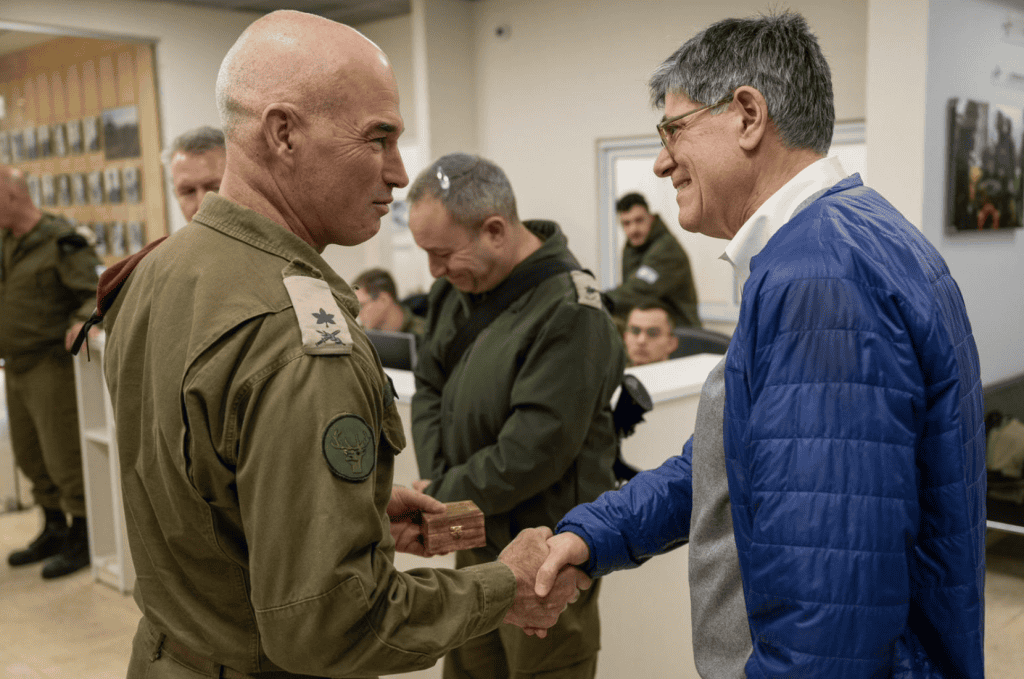
Israeli Defense Minister Yoav Gallant spoke with US Secretary of Defense Lloyd Austin on January 18, his office said. Among the issues raised by Gallant were increased tensions in northern Israel with Hezbollah. “Minister Gallant also raised the threat posed by Hezbollah on Israel’s northern border. He emphasized the priority of returning the displaced communities to their homes in the area, and reiterated the preference for diplomatic channels while maintaining military readiness,” Gallant’s spokesperson said in a statement on January 19.
US Ambassador to Israel Jacob Lew also visited Israel’s Northern Command headquarters, the IDF said on January 19. During the visit, Lew met with IDF head of the Strategic Planning and Cooperation Directorate, Maj. Gen. Eliezer Toledano, and Northern Command head Maj. Gen. Ori Gordin. Gordin has been supervising training in the north as Israeli reservists and IDF units prepare for the possibility of escalation. “During the visit, Ambassador Lew was briefed by the Commanding Officer of the Northern Command regarding the threats posed by the Hezbollah terrorist organization along the Blue Line. The officials also discussed the understanding that Israel cannot revert to the security conditions that were in place prior to October 7th,” the IDF said in a statement.
In the wake of the October 7 Hamas attack on Israel, Hezbollah has been firing rockets and anti-tank missiles at Israel. There have been more than 2,000 rockets launched at Israel in 100 days. This is an unprecedented level of rocket fire and is on par with levels from some previous wars. However, because Hezbollah launches several attacks a day, and Israel responds proportionately, this low-level conflict has taken a back seat to the much larger war in Gaza. For instance, Israel estimates the number of terrorists killed in the “northern arena” is around 170. This may include casualties in Syria, as well, since the IDF does not specify if that northern arena also includes the several IDF strikes in Syria that occurred in response to 30 rockets fired from Syria into Israel since October 7.
The main challenge for Israel is how to return the 80,000 Israeli citizens who were evacuated from the north due to the Hezbollah attacks. “The security situation on the northern border must change, and the threat to the residents of the north must be removed – either through military action or through diplomatic means,” the IDF noted in its explanation of what it had emphasized in discussions with the US ambassador.
The diplomatic visit and Gallant’s conversation with Secretary of Defense Austin came as Hezbollah continued to escalate threats against Israel. The IDF downed a drone that was launched from Lebanon and had flown out to sea before heading toward Israel. The Iron Dome air defense system was used to shoot down the drone. The size of the drone was not specified. Hezbollah has launched drones out to sea in the past, targeting energy facilities off the coast in 2022. These kinds of threats can be more complex because drones with a long range can seek to penetrate Israeli airspace from the sea via a number of routes.
The IDF said on January 19 that it carried out airstrikes against “launch posts, military compounds, and terrorist infrastructure belonging to the Hezbollah terrorist organization in the area the town of Ramyeh in southern Lebanon.” There was also a threat from Syria on January 18. The IDF said that it used tanks to strike military infrastructure in Syria in response to rocket launches from Syria that targeted the Golan.
Tanks were also involved in new operations in Gaza. The 7th armored brigade uncovered a Hamas training facility in Gaza. Hamas used these types of training facilities to prepare for the October 7 attack. In addition, Israel wrapped up a multi-day operation in the West Bank city of Tulkarm. Taken together, the rocket fire at the Golan, the drone from Lebanon, armored forces operations in Gaza and fighting in the West Bank illustrate the multi-front war that Israel is engaged in along most of its borders.







